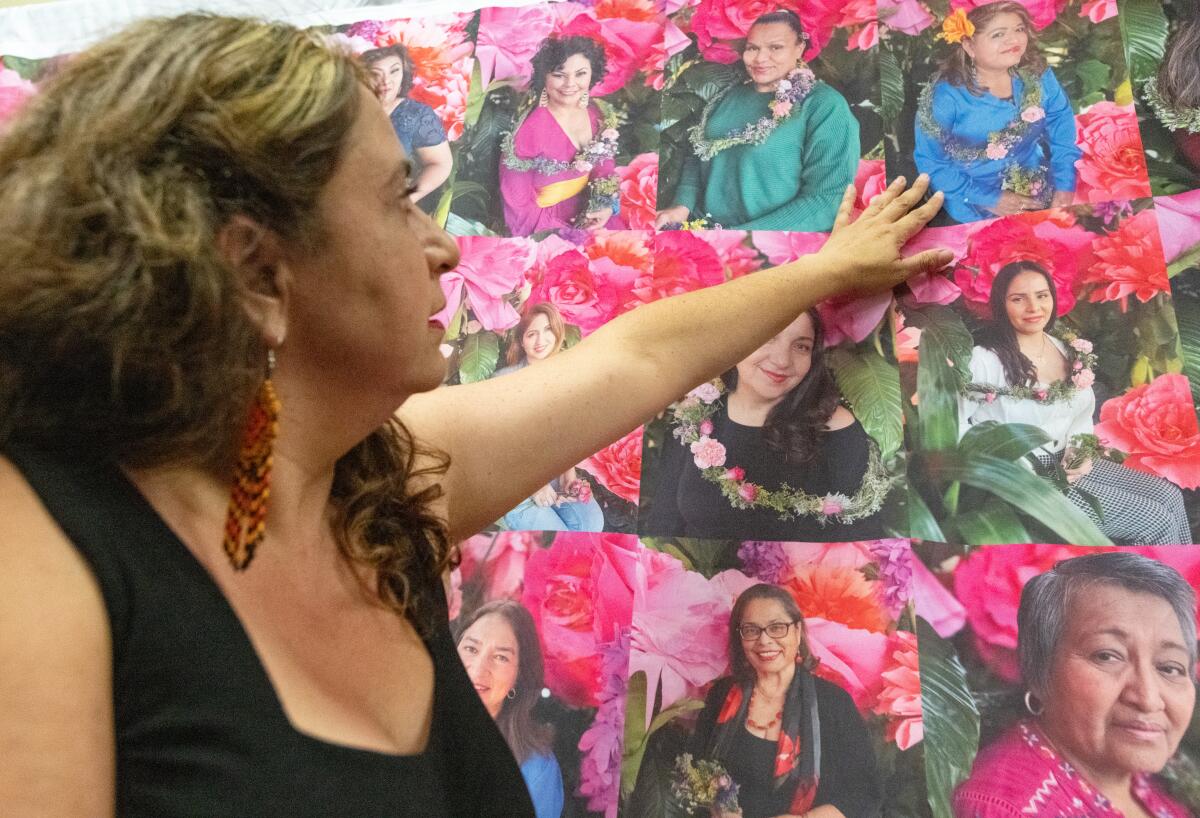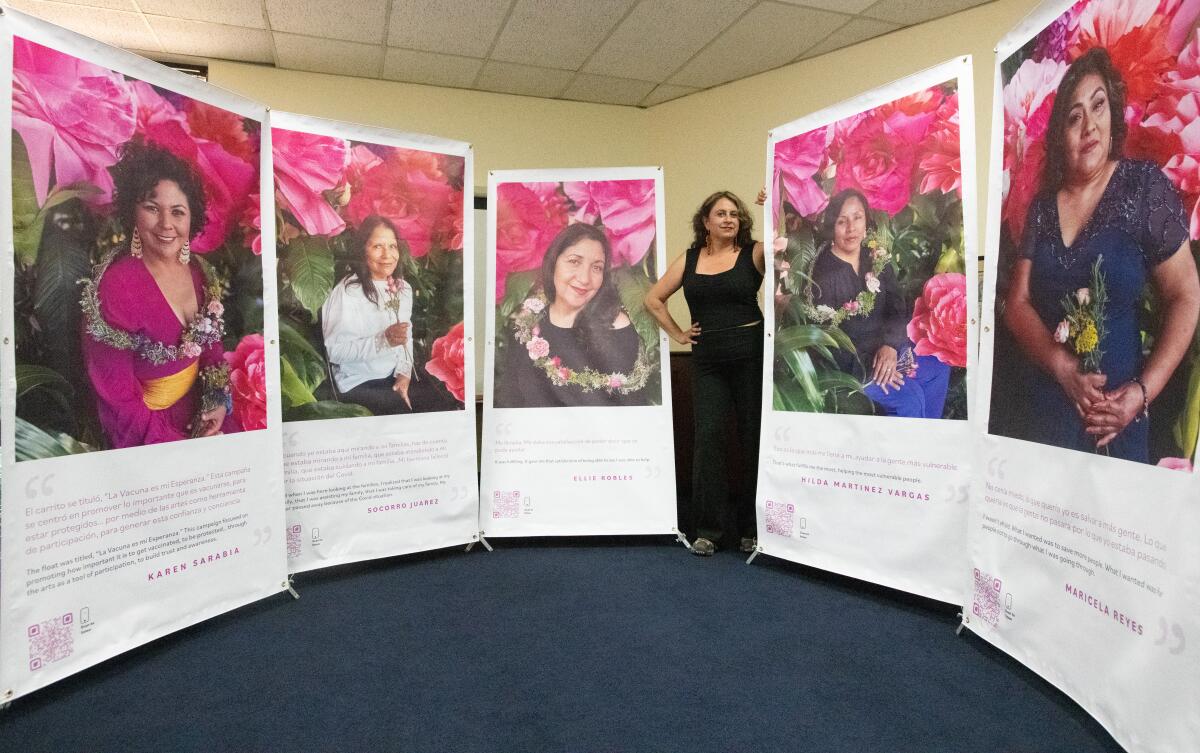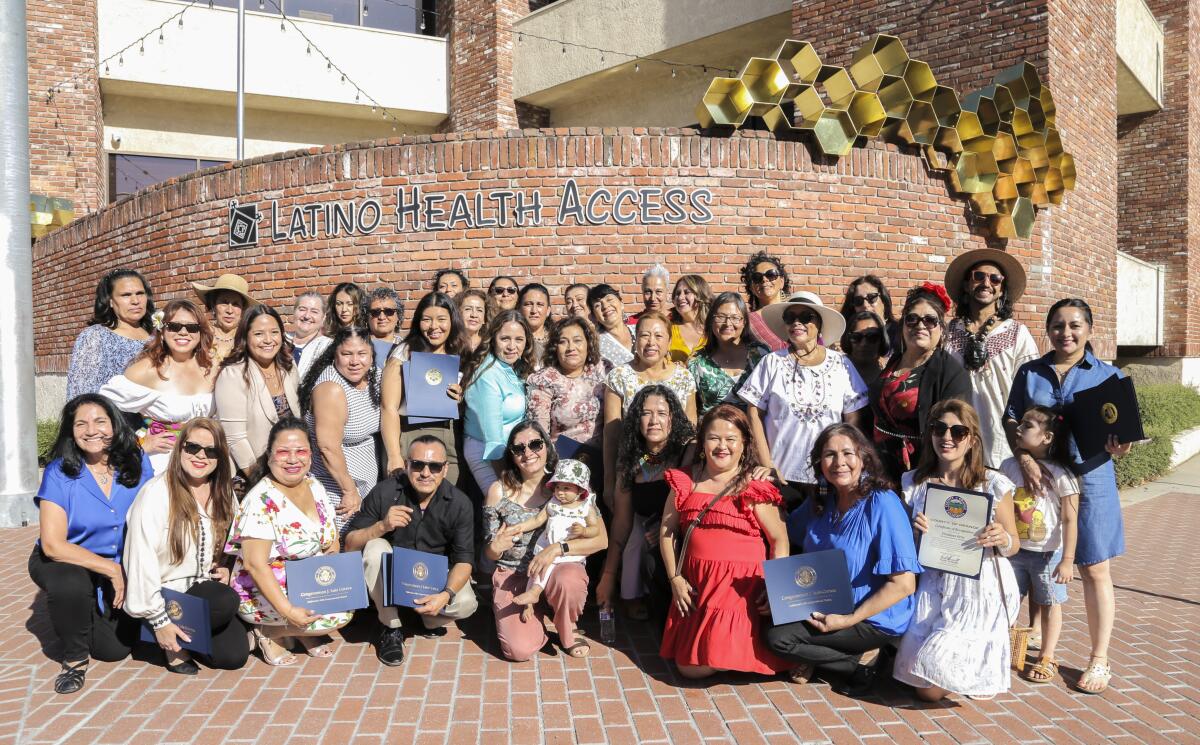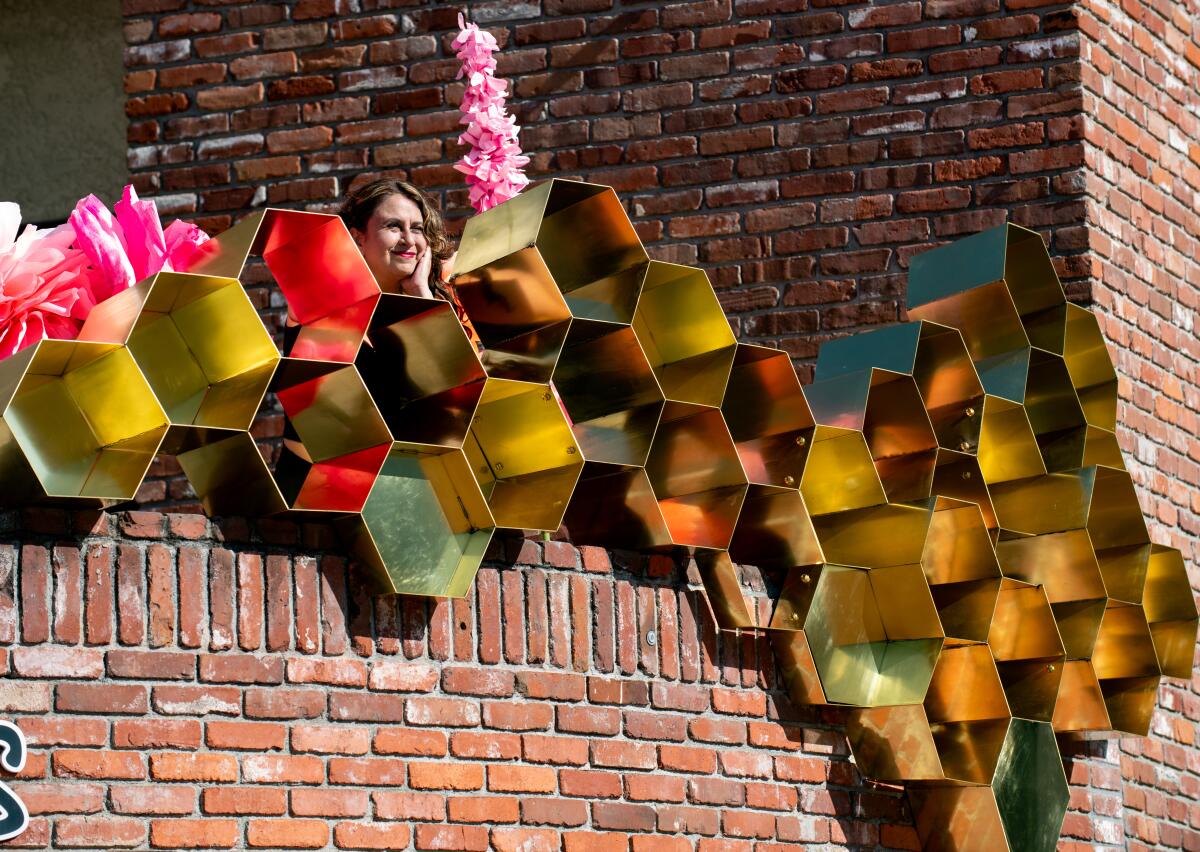Latino Health Access ‘promotoras’ celebrated in art as pandemic heroines

- Share via
A new role awaited Socorro Juarez after she finished a day of outreach for Latino Health Access as a community health worker, or “promotora,” during the height of the pandemic.
The Santa Ana-based nonprofit had a vaccine costume that ran small.
Juarez tried it on at the insistence of her co-workers.
“It fit perfectly as if it were made just for me,” Juarez laughingly recounted. “Now, I was the vaccine!”
She danced around in the costume at different outreach efforts to inform the Latino community of the importance of getting vaccinated.
For Juarez, the work of a promotora — from handing out critical public health information in neighborhoods hit hard by the coronavirus to helping run community testing sites to donning the vaccine costume — hit close to home.
“When I was here looking at the families, I realized that I was looking at my family, that I was assisting my family, that I was taking care of my family,” she said. “My sister passed away because of the COVID situation.”

Stories like Juarez are the foundation of “Las Poderosas de Latino Health Access (The Powerful Women of Latino Health Access),” a new public art project by Santa Ana artist Alicia Rojas.
The artist’s conversations with promotoras — 63 in all, 56 of them women — round out a digital archive of oral histories, shape a forthcoming book of promotora portraits and even inspired a brass sculpture at Latino Health Access’ office in downtown Santa Ana that was publicly unveiled on June 29.
“This project is full of tears, from the beginning to the unveiling,” Rojas said. “It’s been joyful tears. It’s been tears of sharing traumas.”
Rojas recalls working on a mobile float to promote vaccination in the nonprofit’s basement at a time when the pandemic ravaged through Latino working-class neighborhoods, with positivity rates more than double that of Orange County’s average.
Even before the first deadly winter surge in 2020-21, Latinos made up 34% of the county’s population but 45% of COVID-19 deaths.
After dancing around one day while helping to build the float, Maricela Reyes, a promotora, asked Rojas for a ride home.
On the way, Reyes sobbed through her mask. She, too, had lost family to the pandemic.
Rojas suggested taking time away to grieve.
“But we’re dying,” Reyes rebuffed.
The conversation stayed with Rojas for years.

After she put the finishing touches on a “Poderosas” mural in Costa Mesa that celebrated history-making Latinas, the stories shared by promotoras like Reyes gave her a moment of reflection.
“This, too, is a poderosa project,” she said. “These women are American heroes.”
Rojas applied for a fellowship through 18th Street Arts Center, a pilot grant initiative of the California Arts Council. The opportunity seemed tailor-made for an art project celebrating promotoras as proposals sought art dealing with the pandemic, among other social topics.
Other funding came by way of a National Assn. of Latino Arts and Culture grant, Grand Central Arts Center, Latino Health Access, Supervisor Vicente Sarmiento’s office and the city of Santa Ana.

When conceptualizing a monument, Rojas found some continuity with her “With Honey in the Mouth – Con Miel en la Boca” exhibit at Grand Central Arts Center in Santa Ana last year, which focused on bees as a metaphor for forced migration.
This time around, Rojas envisioned a brass sculpture in the shape of a honeycomb as a proper metaphor for the promotora model as a beehive.
“The honeycomb represents their labor of love, their pollination, the strength of the hive that is Latino Health Access,” Rojas said. “These women would come back to this office to recharge, and they’re pollinating with information and care.”
It won’t stand as the only permanent fixture. Rojas’ oral histories will be archived at Cal State Fullerton’s Lawrence de Graaf Center for Oral and Public History.
A 200-page book is forthcoming this summer with promotora portraits framed by a paper flower installation backdrop. Photographer Cecilia Ortiz Fernandez helped Rojas with the portraits. QR codes will also lead readers to the oral histories.
The book is a not-for-profit venture aimed at supporting the model to address continued health inequities exposed by the pandemic and will be presented to the Library of Congress’ American Heroes of the Pandemic collection.
In a county largely bereft of memorials to mourn the pandemic’s dead, which now tally more than 8,600, “Las Poderosas de Latino Health Access” stands as a much-needed tribute to those whose work saved lives.
“We celebrated doctors and nurses as first responders and rightly so, but these women are also heroes —unsung heroes,” Rojas said.
All the latest on Orange County from Orange County.
Get our free TimesOC newsletter.
You may occasionally receive promotional content from the Daily Pilot.




